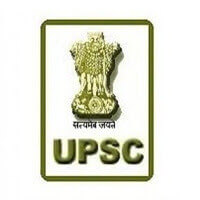What is UPSC CDS Exam?
CDS is abbreviation of Combined Defence Services and Union Public Service Commission (UPSC) conduct CDS exam twice in a year. Candidates can get various jobs under CDS including Lieutenant Colonel, Colonel, Brigadier, Major General (Four-star Officer etc…
Exam Schedule
UPSC regularly publish schedule for Combined Defence Services CDS Exam. You can keep in touch with our Updates website to get real-time updates about all Govt. Jobs including Jobs in Gujarat and Jobs in India.
Age Limit
- 19-24 Years: Indian Military Academy
- 19-22 Years: Naval Academy
- 19-23 Years: Air Force Academy
- 19-25 Years: Officers’ Training Academy
Educational Qualifications
- IMA & OTA Degree of a recognized University or equivalent
- Naval Academy B.Sc. with Physics & Mathematics or Bachelor of Engg.
- Air Force Academy B.Sc. with Physics and/or Mathematics or Bachelor of Engg.
Candidates appearing at the degree or equivalent examination also eligible to compete. Such candidates will be required to submit the proof of passing the requisite qualifying examination by a date to be specified in the Commission’s Notice for the Examination.
Combined Defence Services CDS Exam Scheme
- For Indian Military Academy Naval Academy and Air Force Academy (Total 300 Marks)
- English (Objective type): 100 Marks
- General Knowledge (Objective type): 100 Marks
- Elementary Mathematics (Objective type): 100 Marks
- For Officers’ Training Academy (Total 200 Marks)
- English (Objective type): 100 Marks
- General Knowledge (Objective type): 100 Marks
UPSC CDS Exam Syllabus
- STANDARD: The standard of the papers in Elementary Mathematics will be of Matriculation level. The standard of papers in other subjects will approximately be such as may be expected of a graduate of an Indian University.
- ENGLISH (CODE No. 01): The question paper will be designed to test the candidates’ understanding of English and workmanlike use of words.
- GENERAL KNOWLEDGE (Code No. 02): General Knowledge including knowledge of current events and of such matters of everyday observation and experience in their scientific aspects as may be expected of an educated person who has not made a special study of any scientific subject. The paper will also include questions on History of India and Geography of a nature which candidate should be able to answer without special study.
- ELEMENTARY MATHEMATICS (Code No. 03):
- ARITHMETIC: Number System-Natural numbers, Integers, Rational and Real numbers. Fundamental operations addition, subtraction, multiplication, division, Square roots, Decimal, fractions. Unitary method, time and distance, time and work, percentages, applications to simple and compound interest, profit and loss, ratio and proportion, variation. Elementary Number Theory- Division algorithm. Prime and composite numbers. Tests of divisibility by 2,3,4,5,9 and 11. Multiples and factors. Factorisation Theorem. H.C.F. and L.C.M. Euclidean algorithm, Logarithms to base 10, laws of logarithms, use of logarithmic tables.
- ALGEBRA: Basic Operations, simple factors, Remainder Theorem, H.C.F., L.C.M. Theory of polynomials, solutions of quadratic equations, relation between its roots and coefficients (Only real roots to be considered). Simultaneous linear equations in two unknowns-analytical and graphical solutions. Simultaneous linear inequations in two variables and their solutions. Practical problems leading to two simultaneous linear equations or inequations in two variables or quadratic equations in one variable & their solutions. Set language and set notation, Rational expressions and conditional identities, Laws of indices.
- TRIGONOMETRY: Sine x, cosine x, Tangent x when 00 < x < 900 Values of sin x, cos x and tan x, for x = 00, 300, 450, 600 and 900 Simple trigonometric identities. Use of trigonometric tables. simple cases of heights and distances.
- GEOMETRY: Lines and angles, Plane and plane figures, Theorems on (i) Properties of angles at a point (ii) Parallel lines, (iii) Sides and angles of a triangle, (iv) Congruency of triangles, (v) Similar triangles, (vi) Concurrence of medians and altitudes, (vii) Properties of angles, sides and diagonals of a parallelogram, rectangle and square (viii) Circles and its properties including tangents and normals, (ix) Loci.
- MENSURATION: Areas of squares, rectangles, parallelograms, triangle and circle. Areas of figures which can be split up into these figures (Field Book), Surface area and volume of cuboids, lateral surface and volume of right circular cones and cylinders, surface area and volume of spheres. STATISTICS: Collection and tabulation of statistical data, Graphical representation, frequency polygons, histograms, bar charts, pie charts etc. Measures of central tendency.
UPSC CDS Previous Years Question Papers
| Exam | Subject | Link |
|---|---|---|
| UPSC CDS (I) 2021 | Elementary Math | View / Download |
| UPSC CDS (I) 2021 | English | View / Download |
| UPSC CDS (I) 2021 | General Studies | View / Download |
| UPSC CDS (II) 2020 | Elementary Math | View / Download |
| UPSC CDS (II) 2020 | English | View / Download |
| UPSC CDS (II) 2020 | General Studies | View / Download |
| UPSC CDS (I) 2020 | Elementary Math | View / Download |
| UPSC CDS (I) 2020 | English | View / Download |
| UPSC CDS (I) 2020 | General Studies | View / Download |
| UPSC CDS (II) 2019 | Elementary Math | View / Download |
| UPSC CDS (II) 2019 | English | View / Download |
| UPSC CDS (II) 2019 | General Studies | View / Download |
| UPSC CDS (I) 2019 | Elementary Math | View / Download |
| UPSC CDS (I) 2019 | English | View / Download |
| UPSC CDS (I) 2019 | General Studies | View / Download |





